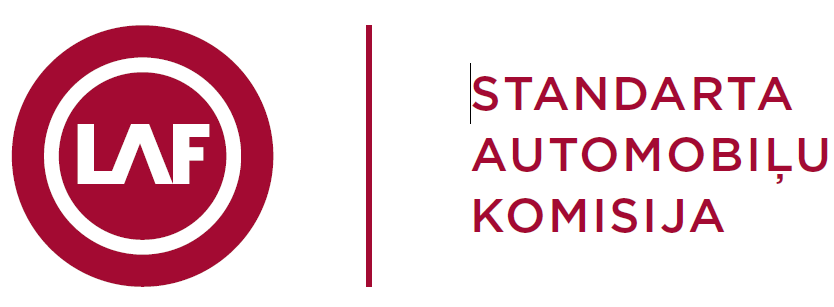TYPICAL LANGUAGE CHARACTERISTICS FOUND IN CHILDREN AND ADOLESCENTS WITH
!TABLE 3 MAX2654 TYPICAL SCATTERING PARAMETERS VCC+30V TA+25OC !FREQ1 UNIFIED CLASSIFICATION AND PROPERTIES OF SOILS TYPICAL NAMES
A SUMMARY OF TYPICAL ENVIRONMENTAL HEALTH AND SAFETY FUNCTIONS
A TYPICAL DAY INTHE LIFE OF VICTORIA FONTANA 1
A TYPICAL LESSON PLAN A TYPICAL LESSON LASTS 45
A TYPICAL ZONING ORDINANCE ARTICLE I PURPOSES [ZONING ORDINANCES
Typical Language Characteristics found in Children and Adolescents with Prenatal Alcohol Exposure and/or Fetal Alcohol Spectrum Disorder
Typical Language Characteristics found in Children and Adolescents with Prenatal Alcohol Exposure and/or Fetal Alcohol Spectrum Disorder
(Adapted from Teaching Children with Fetal Alcohol Syndrome/Effects)
Difficulties with Receptive Language Development
• Comprehension – understanding what is meant
• Discrimination – understanding whether words are the same or different
• Association and Generalization – understanding how things are related by their category or function
• Sequencing – doing things in the right order
• Selective Attention – knowing the important things on which to focus
• Memory
• There may be a discrepancy between receptive and expressive language scores whereby the child scores lower on receptive tasks than he/she scores on expressive tasks.
Expressive Language Development – Children with FASD may:
• Develop language skills at a slower rate than normal
• May not use specific vocabulary (e.g. uses words this, that, stuff etc)
• May not use grammatically complex language structures
• May have oral/motor and articulation difficulties
• May communicate using “cocktail speech” – may be verbal but not communicative and may be verbose without saying anything specific.
Social Communication – Children with FASD may have difficulties with:
• Understanding personal space
• Perspective taking
• Verbal reasoning
• Understanding humour, body language and sarcasm.
• Social judgement
Higher Level Language Skills
• Children with FASD may have normal test scores in expressive and receptive tests, but may have difficulty with abstraction, mental flexibility, inferencing, reasoning, critical thinking etc.
ABBREVIATED CORE RMP FOR BISPHOSPHONATES AND ATYPICAL FEMORAL FRACTURES
ADULT ATTACHMENT QUESTIONNAIRE (AAQ) PLEASE INDICATE HOW YOU TYPICALLY
ANEMIA ANEMIA A TYPICAL PATHOLOGICAL PROCESS OF RED BLOOD
Tags: adolescents with, children, found, typical, characteristics, adolescents, language
- R EQUIRED GERMANLANGUAGE PROFICIENCY LEVEL FOR ENROLMENT AS AN
- NEXT GENERATION OF DEVELOPMENT ENGINEERS USE INDUSTRIAL ROBOTS FROM
- PLAN DE ACTUACIÓN FUNDACIÓN …………………………………… CIF …………………… Nº REGISTRO
- NR 4 2020 DOBRE DNIA 28122020 R ZAPROSZENIE DO
- Reported Speech el “reported Speech” o Estilo Indirecto se
- İLKYARDIM YÖNETMELIĞINDE DEĞIŞIKLIK YAPILMASINA DAIR YÖNETMELIK RG TARIHI18032004 RG
- THE ITEM BELOW IS JUST ONE OF THOUSANDS OF
- PERSBERICHT BRUSSEL 1 DECEMBER 2011 HET IBR REAGEERT OP
- 2 AGRES 2262 (XXXVIIO07) PROTOCOLO DE
- APPLICATION FOR A STARTUP GRANT EXTENSION ONLY COMPLETE THE
- REFERENČNÍ LISTINA REALIZOVANÝCH STAVEB ZA ROK 2010 2018
- SISTEMA DE CONTABILIDAD INTEGRADA GUBERNAMENTAL FECHA 30042020HORA 071106AM PAGINA
- ESTRÉS ANSIEDAD Y EFICIENCIA (200506) (3CRÉDITOS TEÓRICOS Y 3
- SZKOLNY PROGRAM WYCHOWAWCZY ZESPOŁU SZKÓŁ ZAWODOWYCH I OGÓLNOKSZTAŁCĄCYCH W
- CONVENTION FOR THE SUPPRESSION OF THE TRAFFIC IN PERSONS
- INFORMACJA DLA OSÓB CHCĄCYCH BRAĆ UDZIAŁ W KURSACH PRZYGOTOWUJĄCYCH
- ANTECEDENTES DEL CURSO NOMBRE DEL CURSO CÁTEDRA AMANDA LABARCA
- ANDOAINGO UDALA AKTA OSOKO UDALBATZA OHIKO BILKURA 20180222 ACTA
- BIJLAGE MODEL V HUISHOUDELIJK REGLEMENT RECHTEN EN VERPLICHTINGEN VAN
- PROTOS – BENIN RAPPORT DE FORMATION ANIMATION
- GENOMICS THE WORLD`S GOVERNMENTS BEGIN TO RESPOND DATE
- OBRAZEC 2 IZJAVA O AVTORSTVU SPODAJ PODPISANI ROJEN
- NATO UNCLASSIFIED RELEASABLE TO PFPEUMS GROUP 1 APPLICATION FOR
- EDUCATIONAL TECHNOLOGY AND RELATED EDUCATION CONFERENCES FOR JUNE TO
- NA OSNOVU ČLANA 35 STAV 5 ZAKONA O POREZU
- Embassy OF Nepal State OF Kuwait Basic Monthly Salary
- „DAJ SOBIE SZANSĘ PROGRAM PROFILAKTYCZNY NOWOTWORÓW GŁOWY I
- SKUPŠTINA NSS NA OSNOVU ČLANKA 19 PRAVILNIKA NSS DONIJELA
- PRESCRIBING INFORMATION FOR VENLALIC (VENLAFAXINE HYDROCHLORIDE) XL PROLONGEDRELEASE TABLETS
- ARTIFICIAL LIFE AS ARTIFICIAL INTELLIGENCE IS CONCERNED WITH UNDERSTANDING
 SEMANA 3 30 DE SEPTIEMBRE DE 2005 PREGUNTAS 1
SEMANA 3 30 DE SEPTIEMBRE DE 2005 PREGUNTAS 1ZAŁĄCZNIK DO ZAŁĄCZNIKA NR 9 DO PRZEWODNIKA BENEFICJENTA RPO
TERMA RUJUKAN PERKHIDMATAN ASTRO KEMENTERIAN PELAJARAN MALAYSIA PENGENALAN
 LESSON ELEMENT TEXTS THAT ARE LINKED BY A
LESSON ELEMENT TEXTS THAT ARE LINKED BY A ASSEMBLY RESOLUTION NO 236 STATE OF NEW JERSEY 212TH
ASSEMBLY RESOLUTION NO 236 STATE OF NEW JERSEY 212TH2 ETIKOS MOKYTOJŲ METODINIO BŪRELIO 2016 METŲ VEIKLOS PLANAS
 RAZONAMIENTO VERBAL 1 IDENTIFICA EL ELEMENTO EXTRAÑO DE
RAZONAMIENTO VERBAL 1 IDENTIFICA EL ELEMENTO EXTRAÑO DEGENDLIN ET (1992) THREE LEARNINGS SINCE THE DREAMBOOK THE
 „A TUDOMÁNYOS UTÁNPÓTLÁSNEVELÉS ÉS A MŰSZAKI INFORMATIKAI ÉLETPÁLYA ELISMERTSÉGÉNEK
„A TUDOMÁNYOS UTÁNPÓTLÁSNEVELÉS ÉS A MŰSZAKI INFORMATIKAI ÉLETPÁLYA ELISMERTSÉGÉNEKANEXO II TIPOS DE CAMBIO III TIPO DE CAMBIO
 EJERCICIOS DE PROPIEDADES DE FUNCIONES TRIGONOMÉTRICAS EXPONENCIAL LOGARÍTMICA COMPOSICIÓN
EJERCICIOS DE PROPIEDADES DE FUNCIONES TRIGONOMÉTRICAS EXPONENCIAL LOGARÍTMICA COMPOSICIÓNESPRALLI 192031988 (SAVONLINNA) 88PEKKA KOSONEN JUHA HUTTUNEN FORD ESCORT
 CHILD’S NAME PARTICIPANTS IN COLLABORATION DOB PARENT(S) NAME(S) VALUABLE
CHILD’S NAME PARTICIPANTS IN COLLABORATION DOB PARENT(S) NAME(S) VALUABLE DEPARTAMENTO DE RISARALDA SECRETARIA DE INFRAESTRUCTURA ACTA AUDIENCIA SORTEO
DEPARTAMENTO DE RISARALDA SECRETARIA DE INFRAESTRUCTURA ACTA AUDIENCIA SORTEOCÓMO SEGUIR UNA DIETA CON BAJO CONTENIDO DE SAL
DIRECCIÓN PROVINCIAL DE EDUCACIÓN SUPERIOR PROF ANDREA GATTI
A SZABAD SZOFTVER MINT TÁRSADALMI MOZGALOM KÉSZÍTETTÉK BALÁZS BEÁTA
WETENSCHAPPELIJK DENKEN – SAMENVATTING HOOFDSTUK 1 ALGEMENE INLEIDING
 PERSONAL INDEPENDENCE PAYMENT HOW IT MIGHT AFFECT BLUE PARKING
PERSONAL INDEPENDENCE PAYMENT HOW IT MIGHT AFFECT BLUE PARKING SASKAŅOTS APSTIPRINĀTS LAF ĢENERĀLSEKRETĀRE LAF SAK PADOMES VADĪTĀJS LMEDNE
SASKAŅOTS APSTIPRINĀTS LAF ĢENERĀLSEKRETĀRE LAF SAK PADOMES VADĪTĀJS LMEDNE